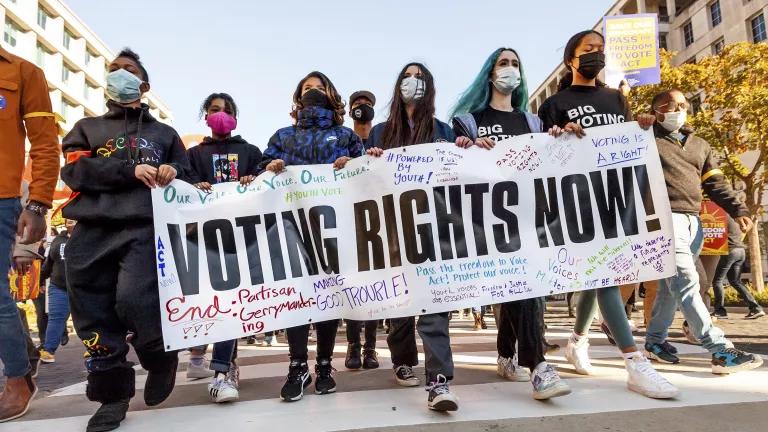Amid Pandemic, EPA Proposal Distorts the Benefits of Reducing Air Pollution

The move would rig the cost-benefit analysis of future clean air safeguards—and hit low-income communities and communities of color the hardest.
UPDATE: On December 9, 2020, the U.S. Environmental Protection Agency finalized its new—and dangerous—way of calculating the costs and benefits of clean air health protections under the Clean Air Act. “Our country is struggling to address racial injustice and a deadly pandemic magnified by pollution, which all heavily impact Black, Latino, and low-income people” says Emily Davis, a senior attorney in NRDC’s Climate & Clean Energy Program. “This is an egregious 11th-hour attempt to handcuff the incoming administration and undercut the benefits of clean air.”
The U.S. Environmental Protection Agency proposed a new, dishonest way of weighing the costs and benefits of the Clean Air Act—a move intended to hamstring the agency’s ability to pass effective clean air protections in the future.
“For the EPA to try to undermine the benefits of clean air amid our national public health crisis is unconscionable,” says John Walke, NRDC’s clean air director. “Our country is struggling with racial injustice and a global pandemic exacerbated by pollution. Both are hitting Black Americans and communities of color hardest.”
The move specifically changes the way the EPA tallies the technical cost-benefit analysis that goes with each new air rule. Under the proposal, carbon pollution that drives climate change would be weighed less heavily, as well as the benefits of tackling multiple pollutants at once. “The EPA lacks any legal authority to launch this attack, and the authority that the EPA imagines is farcical,” Walke says.
The Clean Air Act remains one of the agency’s most effective, live-saving laws. According to a recent report, pollution reductions due to the Clean Air Act will prevent up to 370,000 premature deaths in 2020 alone. By reducing the microscopic particulate matter that makes its way into the lungs and bloodstream, the Clean Air Act prevents a wide range of illnesses, including disease in the heart, lungs, brain, and kidneys.
Recent research also shows that long-term exposure to air pollution—which disproportionately burdens low-income communities and communities of color—is associated with significantly higher death rates from COVID-19 in the United States.
“The EPA should stop looking for ways to help polluters today and hamstring President Trump’s successors tomorrow,” Walke says. “And it should return to its core mission to protect people from pollution, all people in all communities. We will fight to ensure this dishonest, irresponsible plan never becomes law.”



